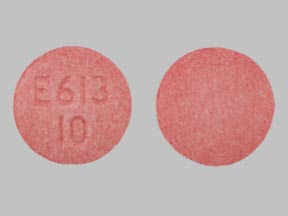Opana Injection Dosage
Generic name: OXYMORPHONE HYDROCHLORIDE 1mg in 1mL
Dosage form: injection
Drug class: Opioids (narcotic analgesics)
Medically reviewed by Drugs.com. Last updated on Dec 6, 2024.
2.1 Important Dosage and Administration Instructions
Use the lowest effective dosage for the shortest duration consistent with individual patient treatment goals.
Initiate the dosing regimen for each patient individually, taking into account the patient's severity of pain, patient response, prior analgesic treatment experience, and risk factors for addiction, abuse, and misuse.
Monitor patients closely for respiratory depression, especially within the first 24-72 hours of initiating therapy and following dosage increases with OPANA injection and adjust the dosage accordingly.
Parenteral drug products should be inspected visually for particulate matter and discoloration prior to administration whenever solution and container permit.
2.2 Initial Dosage
Subcutaneous or intramuscular administration: initially 1 mg to 1.5 mg, repeated every 4 to 6 hours as needed.
Intravenous administration: 0.5 mg initially. In non-debilitated patients the dose can be cautiously increased until satisfactory pain relief is obtained.
For analgesia during labor: 0.5 mg to 1 mg intramuscularly is recommended.
Conversion from oral OPANA to OPANA injection
There is inter-patient variability in the potency of opioid drugs and opioid formulations. Therefore, a conservative approach is advised when determining the total daily dosage of OPANA. It is safer to underestimate a patient’s 24-hour OPANA dosage than to overestimate the 24-hour OPANA dosage and manage an adverse reaction due to overdose.
Given the absolute oral bioavailability of approximately 10%, patients receiving oral OPANA may be converted to OPANA injection by administering one-tenth the patient’s total daily oral oxymorphone dose as OPANA Injectable in four or six equally divided doses (e.g., total daily Oral dose/ [10 x 4]). For example, approximately 1 mg of OPANA Injectable IM every 6 hours (4 mg total IM dose) may be required to provide pain relief equivalent to a total daily dose of 40 mg oral OPANA. The dose can be titrated to optimal pain relief or combined with acetaminophen/NSAIDs for optimal pain relief. Due to patient variability with regard to opioid analgesic response, upon conversion patients should be closely monitored to ensure adequate analgesia and to minimize side effects.
Dosage Modifications in Patients with Hepatic Impairment
OPANA injection is contraindicated in patients with moderate and severe hepatic dysfunction. OPANA injection should be used with caution in patients with mild hepatic impairment. These patients with mild hepatic impairment should be started with the lowest dose and titrated slowly while carefully monitoring side effects.
Dosage Modifications in Patients with Renal Impairment
The effects of OPANA injection on renal impairment have not been studied. However, in patients treated with OPANA, there is an increase in oxymorphone bioavailability in patients with moderate to severe renal impairment, compared to the subjects with normal renal function. Accordingly, OPANA injection should be administered cautiously and in reduced dosages to patients with creatinine clearance rate less than 50 mL/min.
Dosage Modifications in Geriatric Patients
Exercise caution should be exercised in the selection of the starting dose of OPANA injection for an elderly patient starting at the low end of the dosing range .
Dosage Modifications with Concomitant Use with Central Nervous System Depressants
OPANA injection, like all opioid analgesics, should be started at 1/3 to 1/2 of the usual dose in patients who are concurrently receiving other central nervous system (CNS) depressants including sedatives or hypnotics, general anesthetics, phenothiazines, tranquilizers, and alcohol, because respiratory depression, hypotension and profound sedation, coma or death may result. When combined therapy with any of the above medications is considered, the dose of one or both agents should be reduced.
Although no specific interaction between oxymorphone and monoamine oxidase inhibitors has been observed, OPANA injection is not recommended for use in patients who have received MAO inhibitors within 14 days.
Titration and Maintenance of Therapy
Individually titrate OPANA injection to a dose that provides adequate analgesia and minimizes adverse reactions. Continually reevaluate patients receiving OPANA injection to assess the maintenance of pain control and the relative incidence of adverse reactions, as well as monitoring for the development of addiction, abuse, or misuse. Frequent communication is important among the prescriber, other members of the healthcare team, the patient, and the caregiver/family during periods of changing analgesic requirements, including initial titration.
If the level of pain increases after dosage stabilization, attempt to identify the source of increased pain before increasing the OPANA injection dosage. If unacceptable opioid-related adverse reactions are observed, consider reducing the dosage. Adjust the dosage to obtain an appropriate balance between management of pain and opioid-related adverse reactions.
Discontinuation of OPANA Injection
When a patient who has been taking OPANA injection regularly and may be physically dependent no longer requires therapy with OPANA injection, taper the dose gradually, by 25% to 50% every 2 to 4 days, while monitoring carefully for signs and symptoms of withdrawal. If the patient develops these signs or symptoms, raise the dose to the previous level and taper more slowly, either by increasing the interval between decreases, decreasing the amount of change in dose, or both. Do not abruptly discontinue OPANA injection in a physically-dependent patient.
Frequently asked questions
More about Opana (oxymorphone)
- Check interactions
- Compare alternatives
- Reviews (84)
- Drug images
- Latest FDA alerts (4)
- Side effects
- Dosage information
- During pregnancy
- FDA approval history
- Drug class: Opioids (narcotic analgesics)
- Breastfeeding
Patient resources
Other brands
Professional resources
Other brands
Related treatment guides
See also:
Further information
Always consult your healthcare provider to ensure the information displayed on this page applies to your personal circumstances.


